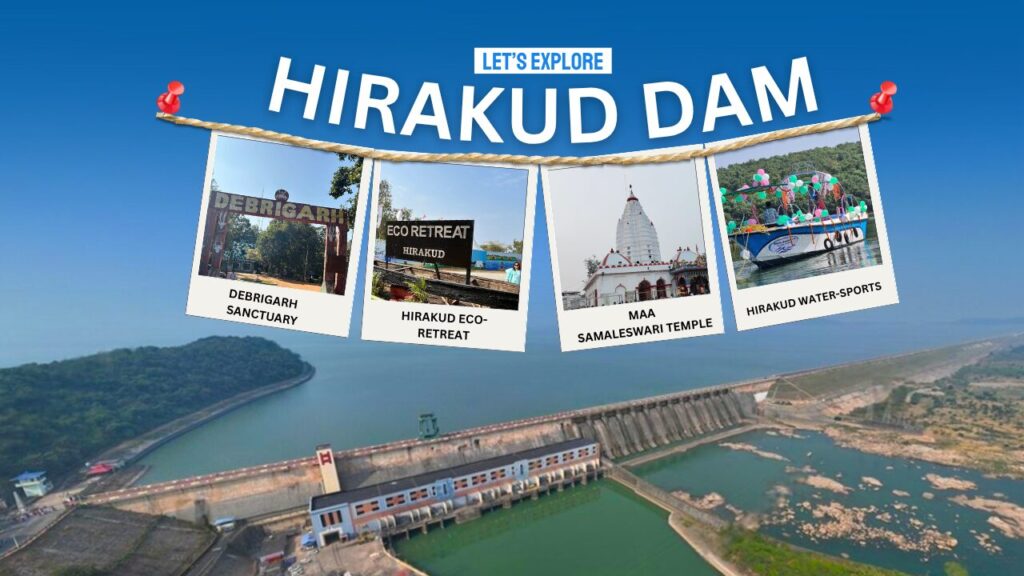1. Introduction: Discovering Hirakud Dam, Sambalpur
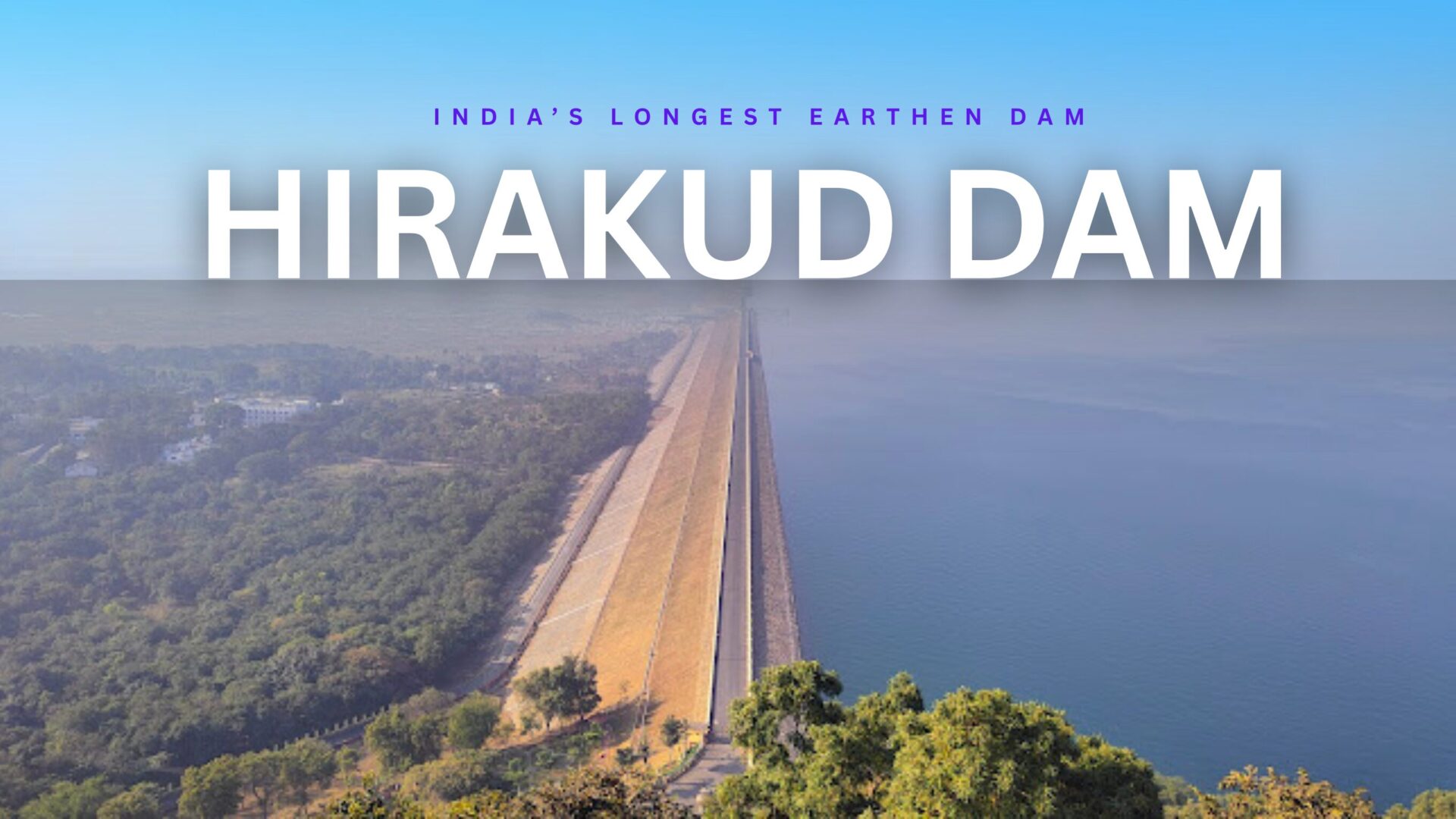
Hirakud Dam Travel Guide: Hirakud Dam, situated approximately 15 kilometers from Sambalpur city in the western part of Odisha, stands as a monumental achievement in India’s post-independence engineering landscape. Completed in 1957, it holds the distinction of being the world’s longest earthen dam, stretching an impressive 25 to 26 kilometers across the Mahanadi River. This colossal structure is more than just a dam; it is a multi-purpose project vital to the region’s socio-economic fabric, playing crucial roles in irrigation, flood control, and hydroelectric power generation. Its construction was a landmark undertaking, symbolizing India’s nascent journey towards self-reliance and national development.
The dam’s expansive reservoir, known as Hirakud Reservoir, covers an area of about 743 square kilometers, making it one of Asia’s largest artificial lakes. This vast water body, set against a backdrop of picturesque hills and lush green landscapes, offers breathtaking panoramic views, particularly from its dedicated observation towers, Gandhi Minar and Nehru Minar. The sheer scale of the dam and its surrounding natural beauty create a dramatic landscape that attracts visitors, highlighting its dual identity as both a functional marvel of infrastructure and a compelling tourist destination. This characteristic broadens the appeal of the site, drawing interest from those fascinated by national development projects as well as those seeking natural beauty and recreational opportunities.
For travelers, the Hirakud region offers a diverse array of experiences. Visitors can appreciate the immense scale of the dam, with opportunities for scenic drives along its 21-kilometer dykes. The expansive reservoir allows for serene boating experiences, providing a unique perspective of the vast waters. Beyond the dam itself, the surrounding area boasts natural wonders such as the Debrigarh Wildlife Sanctuary, a significant haven for diverse flora and fauna. Cultural and spiritual immersion is also possible through visits to sites like the Samaleswari Temple in Sambalpur and the architecturally unique Leaning Temple of Huma. The historical context of the dam as a symbol of post-independence progress adds a layer of depth, transforming a visit from a mere sightseeing trip into an appreciation of India’s developmental journey.
2. Crucial 2025 Visitor Information & Safety
Important Update: Dam Premises Restrictions (2025)
A critical development as of May 10, 2025, significantly impacts visitor access to Hirakud Dam: entry to the dam premises has been restricted for tourists and visitors until further notice. This decision was implemented due to heightened national security concerns, specifically amid prevailing India-Pakistan tensions. The dam, being a vital national asset crucial for irrigation, power generation, and flood control, has seen its security measures significantly bolstered.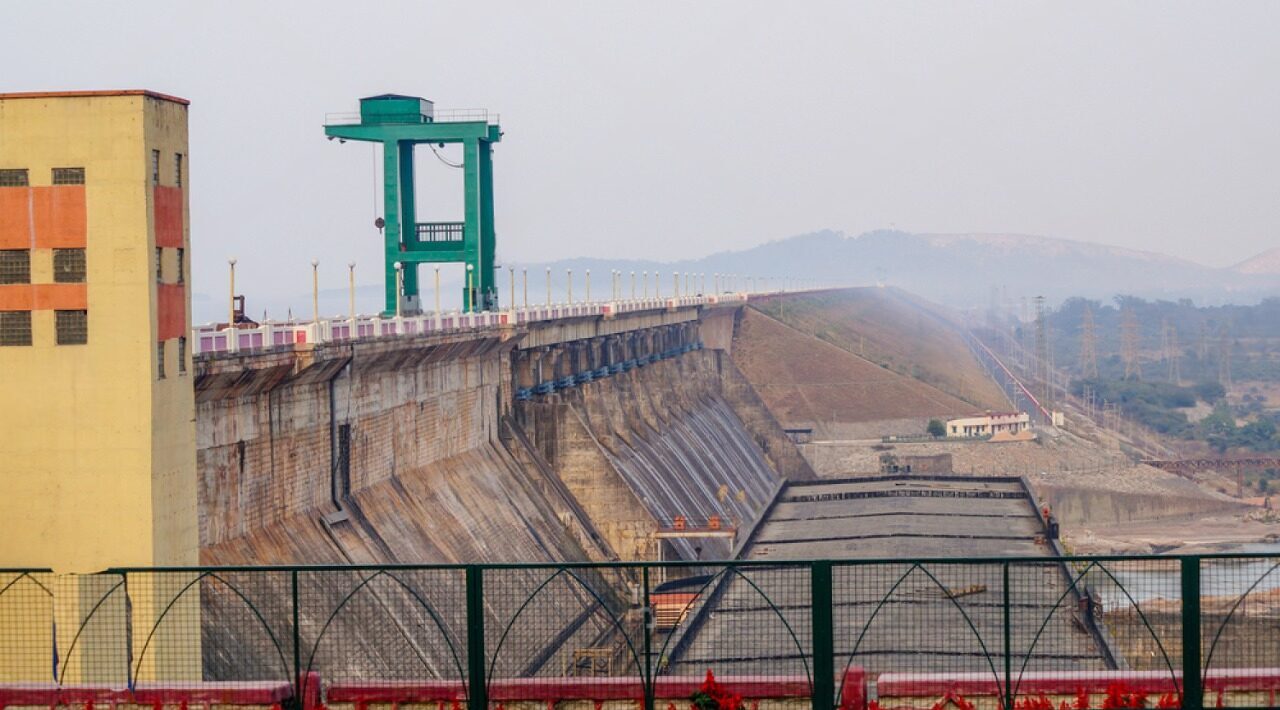
Authorities have deployed advanced security protocols, including high-calibre weapons and enhanced surveillance equipment, at key entry points to ensure thorough monitoring and rapid response capabilities. Barricades have been erected, and police personnel are stationed to enforce the restriction order. The Sambalpur district administration has clarified that this measure is temporary and will be reviewed periodically based on the evolving security situation. This means that the traditional experience of directly visiting the dam premises is currently unavailable. Visitors are strongly advised to avoid entering restricted zones and to adhere strictly to official guidelines. For real-time information and updates, the Sambalpur district police control room has been re-designated as the town civil defence control room, operating round the clock, and can be contacted at 8018250001.
Foreigner Entry Status
Adding to the general restrictions, there have been specific reports, as recently as January 2023, indicating that foreigners have been denied entry or detained at the gate, citing security reasons. This suggests a pre-existing or intermittent restriction for international visitors, which may be further intensified by the current security climate. International travelers should be particularly vigilant in verifying access rules before planning their journey.
General Safety Tips
Adherence to safety guidelines issued by the dam management and local authorities is paramount. Visitors must never venture into restricted areas and should always follow instructions provided by dam personnel and security forces. Extreme caution is necessary near water bodies. During the monsoon season (June to October), water levels in the reservoir increase significantly, and the dam gates may be opened for flood control, posing substantial risks. The Hirakud Dam Authority issues warnings in this regard, alerting downstream districts, and people are explicitly cautioned not to enter the river during this period.
Environmental preservation is also a key responsibility of visitors; littering should be avoided to maintain the natural beauty of the area. Given the tropical climate, especially during hotter months, it is advisable to pack light cotton clothing, and always carry sunscreen, hats, and sunglasses for protection. Staying well-hydrated by carrying a water bottle is crucial. When interacting with locals or visiting religious sites, showing respect for local customs and traditions is important. This includes dressing modestly, particularly in temples, and remembering to remove shoes before entering.
Dam Rehabilitation Project (DRIP Phase III)
The Odisha government has initiated a significant investment of Rs 1,066.3 crore (approximately $127 million USD) towards the Dam Rehabilitation and Improvement Project (DRIP), Phase III, for Hirakud Dam. This World Bank and Asian Infrastructure Investment Bank-funded initiative aims to rehabilitate distressed dams across India, enhancing their longevity and safety.
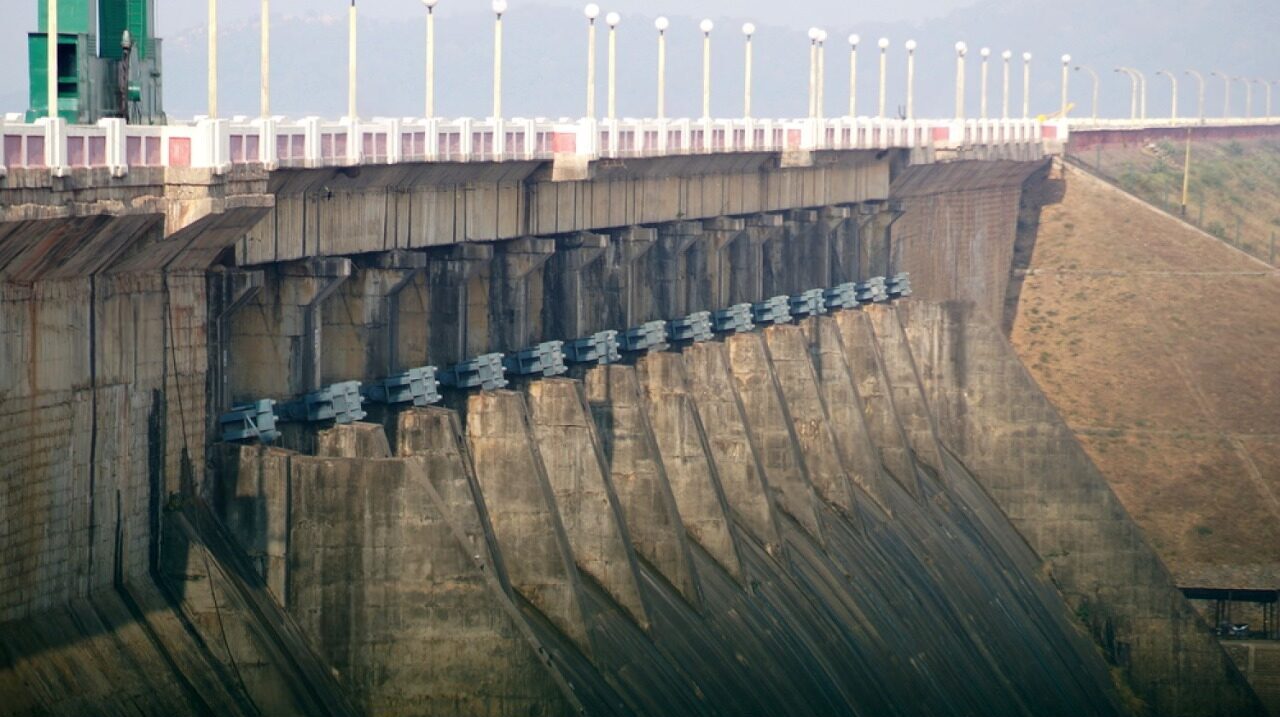
Scheduled for implementation over six years from 2025-26 to 2030-31, key works under DRIP-III include the construction of an additional spillway on the left dyke for the safer passage of excess floodwaters. The project also involves the automation of existing and proposed spillway gates using SCADA (Supervisory Control and Data Acquisition) systems, which will improve control and monitoring under the supervision of national and international experts.
Furthermore, comprehensive underwater, ground, and aerial surveys will be conducted to detect cracks and assess the dam’s condition for necessary rehabilitation. This project is crucial for preventing downstream loss of life and property and minimizing environmental damage in the event of dam failure, representing a proactive strategy to mitigate risks associated with aging infrastructure.
3. Planning Your Visit: Weather & Best Time
Hirakud Dam experiences a tropical climate with distinct seasonal variations. Understanding these patterns is essential for planning an optimal visit.
Climate Overview
- Summers (March to May): These months are intensely hot and humid, with temperatures typically ranging from 35°C to 45°C. Such high temperatures can make extended outdoor activities and sightseeing quite challenging. A unique phenomenon during summer, however, is the receding water levels in the reservoir, which reveal the submerged remnants of old temples that were inundated during the dam’s construction. This offers a rare glimpse into the region’s historical past, providing a compelling reason for those interested in history or photography to consider an off-peak visit, despite the heat.
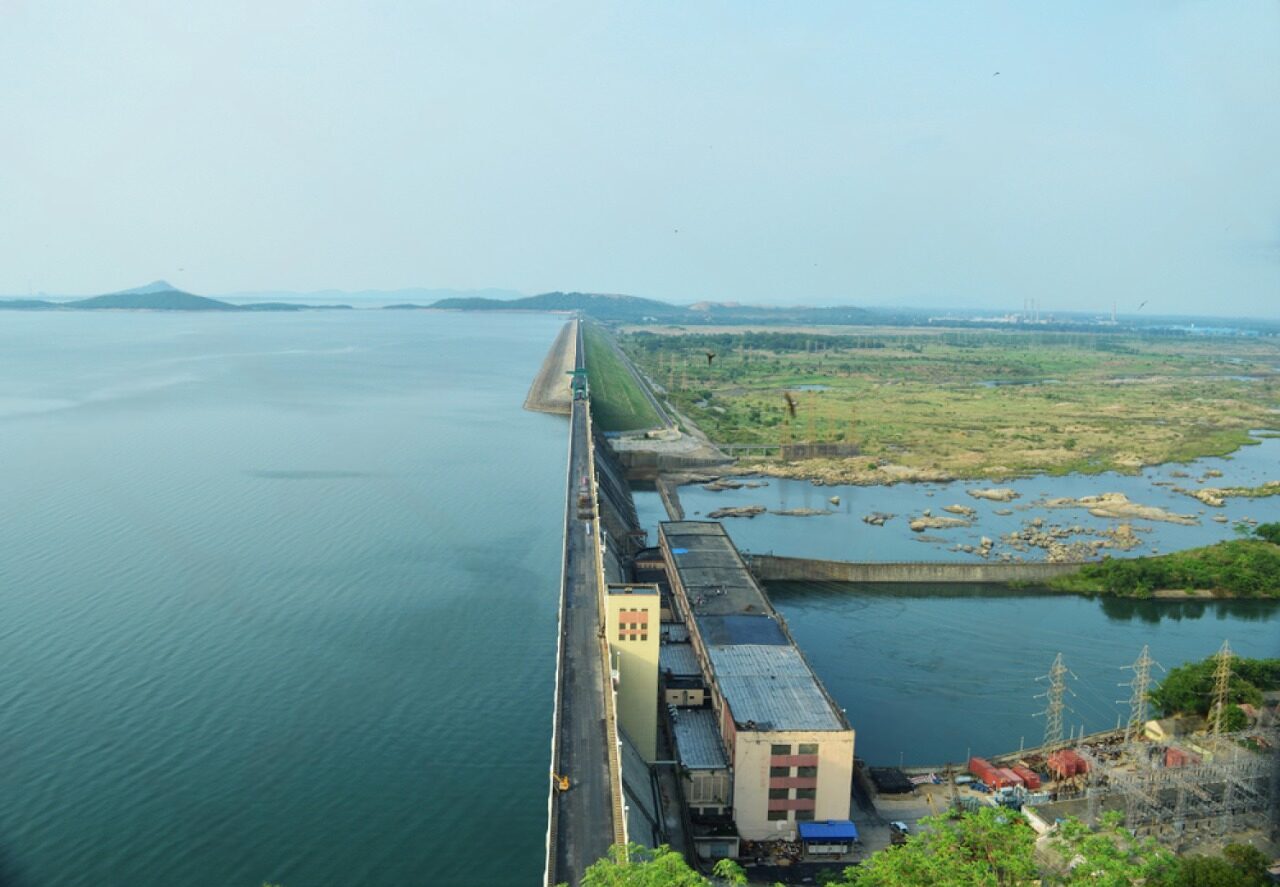
Monsoon (June to September): This period brings heavy rainfall, which is generally not conducive for tourism. The heavy rains can disrupt travel plans, and more importantly, lead to restricted access to certain areas of the dam due to safety concerns and increased water levels. The Hirakud Dam Authority also issues warnings as dam gates may be opened for flood control anytime between June 1 and October 31, alerting downstream districts. While the sight of water gushing from the gates can be “powerful and electrifying” , the significant safety hazards due to potential floodwater release and resultant access limitations make this period generally unsuitable for visitors. This reinforces the importance of adhering to local warnings during this period, transforming a general travel tip into a critical safety advisory.
Best Time to Visit
Based on climatic comfort and the availability of activities, the optimal period to visit Hirakud Dam is from October to March , with a more specific recommendation for November to February. This window ensures the most comfortable weather for exploration and allows visitors to experience the region’s natural beauty and cultural vibrancy at its peak.
Table 1: Hirakud Dam Seasonal Climate & Best Time to Visit
4. Getting To & Around Hirakud Dam
Hirakud Dam is conveniently located approximately 15 kilometers from Sambalpur city, ensuring relatively easy access for visitors. The region benefits from robust connectivity via air, train, and road networks, making it a highly accessible destination suitable for various travel styles, from quick day trips to being a convenient stop on a larger Odisha itinerary.
How to Reach Hirakud Dam (General Connectivity)
- By Air: The nearest airport is Veer Surendra Sai Airport (JRG) in Jharsuguda, situated about 48 to 60 kilometers away. This airport offers good connectivity to major cities across India.
- By Train: Sambalpur Railway Station serves as the closest major rail hub, providing regular train services connecting it to various parts of the country. Additionally, Hirakud itself has a railway station, offering a direct, albeit local, train option.
- By Road: The region is well-connected by a robust road network, including National Highway 6, which is a major trunk route. A variety of road transport options are available from Sambalpur city, including regular bus services and taxis, ensuring convenient travel to the dam.
Local Transportation Options (from Sambalpur to Hirakud Dam)
For travel between Sambalpur and Hirakud Dam, visitors have several efficient options:
- Trains: A direct train service operates frequently, departing every four hours from Sambalpur to Hirakud Station. The journey is remarkably short, taking approximately 17 minutes. Ticket prices are quite affordable, ranging from ₹35 to ₹700 depending on the class of travel.
- Taxis/Cabs: Taxis offer the fastest way to reach Hirakud Dam from Sambalpur. The road distance varies slightly depending on the exact destination (e.g., 10.9 km to Hirakud Station, 18.54 km to Hirakud Dam), with travel times ranging from 12 to 28 minutes. Estimated fares from Sambalpur to Hirakud Dam typically fall between approximately ₹263 (Economy class) and ₹478 (Go Intercity), with ride-sharing options like UberGo and UberX also available.
- Mo Bus Services: For budget-conscious travelers or those preferring local public transport, the “Mo Bus” service provides a convenient and affordable option. Route 203 specifically connects the Ainthapali Bus Terminal in Sambalpur to Hirakud Dam, with frequent departures throughout the day, from 06:10 AM to 07:10 PM. This detailed schedule highlights a reliable and accessible public transport choice that can significantly lower travel costs, making the destination more inclusive.
- Auto-rickshaws: While specific details for Hirakud Dam were not extensively provided, auto-rickshaws are a common and flexible mode of local transport in Indian cities like Sambalpur , offering another option for shorter distances and local commutes.
- Self-drive: For those preferring personal mobility and flexibility, driving from Sambalpur to Hirakud Station is a quick 12-minute journey covering about 11 km, with estimated fuel costs around ₹110-₹159.
The robust and multi-modal transportation infrastructure surrounding Hirakud Dam reduces potential travel friction, making the destination more appealing and encouraging spontaneous or short-notice visits.
Table 2: Local Transportation Options to Hirakud Dam from Sambalpur
This table provides highly actionable and practical information, enabling travelers to efficiently plan their local commute based on their budget, time constraints, and preferences.
5. Visitor Facilities & Accessibility
General Visiting Hours & Entry Fees
Historically, Hirakud Dam has been open to visitors typically from 6:00 AM to 6:00 PM. It is important to note that these timings can vary slightly based on the season and management regulations, making it advisable to check current hours before a visit. While general entry to the dam itself has been stated as free , there may be a nominal entry fee for visitors wishing to access certain specific areas for maintenance or administrative purposes. It is always best to confirm any applicable fees prior to a visit.
However, a crucial update from May 2025 indicates that direct entry to the dam premises is currently restricted for tourists due to national security concerns. This temporary restriction overrides the previously stated general visiting hours and free entry for the dam premises itself. This highlights a significant challenge for travelers due to potentially outdated information. The most recent information regarding access should always be prioritized, and travelers are strongly encouraged to verify real-time conditions, especially via the civil defence control room helpline (8018250001), before planning their visit to manage expectations and prevent disappointment upon arrival.
On-site Amenities (Dam Premises)
- Viewing Points: The dam offers several designated viewing points along its extensive length, providing panoramic vistas of the reservoir and the surrounding hills. Notable observation towers like Gandhi Minar and Nehru Minar offer elevated aerial views of the dam and the vast lake.
- Visitor Center: A visitor center is available, offering informative displays about the dam’s construction, its historical and economic significance, and the ecological aspects of the reservoir.
- Photography: Cameras are generally allowed at Hirakud Dam, making it a highly photogenic spot. However, visitors should be aware that photography may be restricted in certain security-sensitive areas, and it is essential to respect any signage or instructions from personnel.
- Parking, Food, Restrooms: The provided information does not explicitly detail specific parking lots, dedicated food stalls/restaurants, or public restroom facilities directly at the Hirakud Dam premises for general visitor use. While it is common for major tourist attractions in India to have some basic provisions or nearby vendors, specific details for the dam itself are not available. However, the Hirakud Eco Retreat, a prominent tourist development located in the vicinity, offers comprehensive facilities including diverse food options, drinks, and well-maintained toilet facilities. This suggests that visitors’ basic needs for food, beverages, and restrooms can be met within the broader Hirakud area, even if direct amenities at the dam might be sparse or unconfirmed.
Accessibility Features
Specific details regarding accessibility features (e.g., ramps, wheelchair access) directly at the Hirakud Dam itself are not extensively covered in the provided information. However, general regional information suggests a growing awareness and provision of such facilities in the wider area. For instance, the nearby Veer Surendra Sai Airport in Jharsuguda provides wheelchair assistance, childcare rooms, and ensures that its parking lot, restrooms, seats, and entrances are wheelchair accessible.
Furthermore, Odisha Tourism, in broader initiatives, promotes responsible tourism by ensuring waste management and accessibility at other tourist sites. The Hirakud Eco Retreat, a significant nearby tourist facility, emphasizes “100% cleanliness” and “well-appointed toiletries” , implying standard modern facilities that would likely include some level of accessibility.
6. Accommodation Near Hirakud Dam
Travelers visiting Hirakud Dam have several accommodation options, ranging from hotels in the nearby city of Sambalpur to a unique eco-retreat experience closer to the dam. This offers a dual accommodation strategy, catering to different traveler profiles and preferences.
Hotels in Sambalpur
Sambalpur city, being the nearest urban center, offers a diverse range of accommodation options to suit various budgets and preferences, from economical stays to more comfortable lodging facilities. Many visitors find it convenient to base themselves in Sambalpur and undertake day trips to Hirakud Dam. This approach provides practicality and a wider range of options for city amenities.
Table 3: Recommended Accommodation Options in Sambalpur
Note: Prices are approximate and subject to change. USD conversions are for illustrative purposes based on approximate exchange rates.
This table provides a structured, comparative list of hotels, allowing users to quickly assess options based on critical factors like price, rating, and specific features, streamlining the accommodation planning process.
Hirakud Eco Retreat
For a unique and immersive experience, the Hirakud Eco Retreat offers a seasonal glamping opportunity, blending eco-conscious tourism with luxury. It is strategically located near the Hirakud Dam, offering breathtaking views and adventure activities in a serene natural setting.
This eco-resort operates annually for a specific period, typically from December 1st to March 1st. For the upcoming season, it will run from December 1, 2024, to March 1, 2025. Accommodation consists of premium Swiss tents, providing comfortable twin or double beds, a spacious sitting area, and an en-suite bathroom, thus offering modern amenities within a natural setting. Pricing for a Premium Swiss Cottage is approximately Rs. 6000 for 2 people per night, excluding GST.
The Eco Retreat provides a comprehensive array of facilities and services, including 100% safety and hygiene, air conditioning, diverse culinary delights (global cuisines, evening barbecues, chai-tapri experiences), evening cultural programs, thrilling water sports (jet skiing, parasailing, water skiing, fishing), and recreational activities (rifle shooting, archery, ATVs, bicycles, mountain bikes).
Guided tours are also available, and the retreat offers 24/7 doctor facilities. Booking is conveniently available online through the official Odisha Tourism website, ecotourodisha.com.
Given the current restrictions on direct access to the dam premises, the Eco Retreat’s extensive list of amenities positions it as a primary destination for experiencing the Hirakud region’s recreational and cultural offerings. It effectively serves as a self-contained activity and facility hub, offering activities and amenities that might otherwise be unavailable or difficult to access, making it a crucial pivot for managing visitor expectations and enhancing the overall travel experience in 2025.
7. Experiences & Activities at Hirakud
Despite the current restrictions on direct access to the dam premises, the Hirakud region offers a rich tapestry of experiences, from water-based adventures to cultural immersion and wildlife encounters. This ensures that a visit to Sambalpur can still be incredibly rich and fulfilling.
Boating & Water Activities
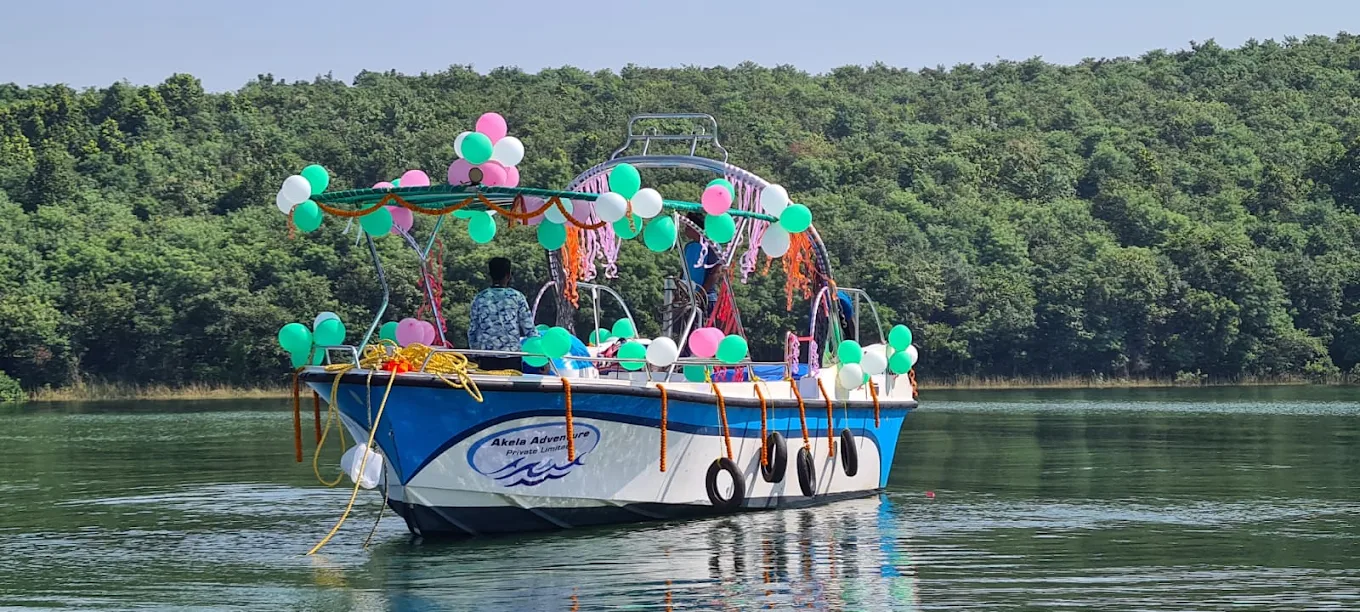
Boating facilities are available on the expansive Hirakud Reservoir, offering visitors a chance to explore its vast waters and enjoy the scenic beauty. While general “water sports activities are generally not conducted at the dam” itself , the nearby Hirakud Eco Retreat serves as a dedicated hub for thrilling motorized and non-motorized water sports. These include jet skiing, parasailing, water skiing, fishing, kayaking, paddle boating, and bumper rides. Water sports are typically available from 7:00 AM to 6:00 PM.
For group experiences, booking an entire 8-seater luxury boat for a 3-hour cruise (covering areas like Nature Camp, Bat Island, Sunset Island, and Cattle Island) costs approximately ₹6,000, in addition to a separate ₹40 entry fee per adult. Individual seat booking on cruise boats is generally not permitted. Other boat rental options are available for groups of 6 adults and 2 children, with prices ranging from ₹1,500 for a 90-minute basic ride to ₹3,500 for 3.5-4 hour premium tours, which may include dolphin spotting, bird watching, and visits to various islands. This distinction is vital for travelers, as it clarifies that the Eco Retreat is the primary destination for water sports, helping in precise itinerary planning.
Observation Towers
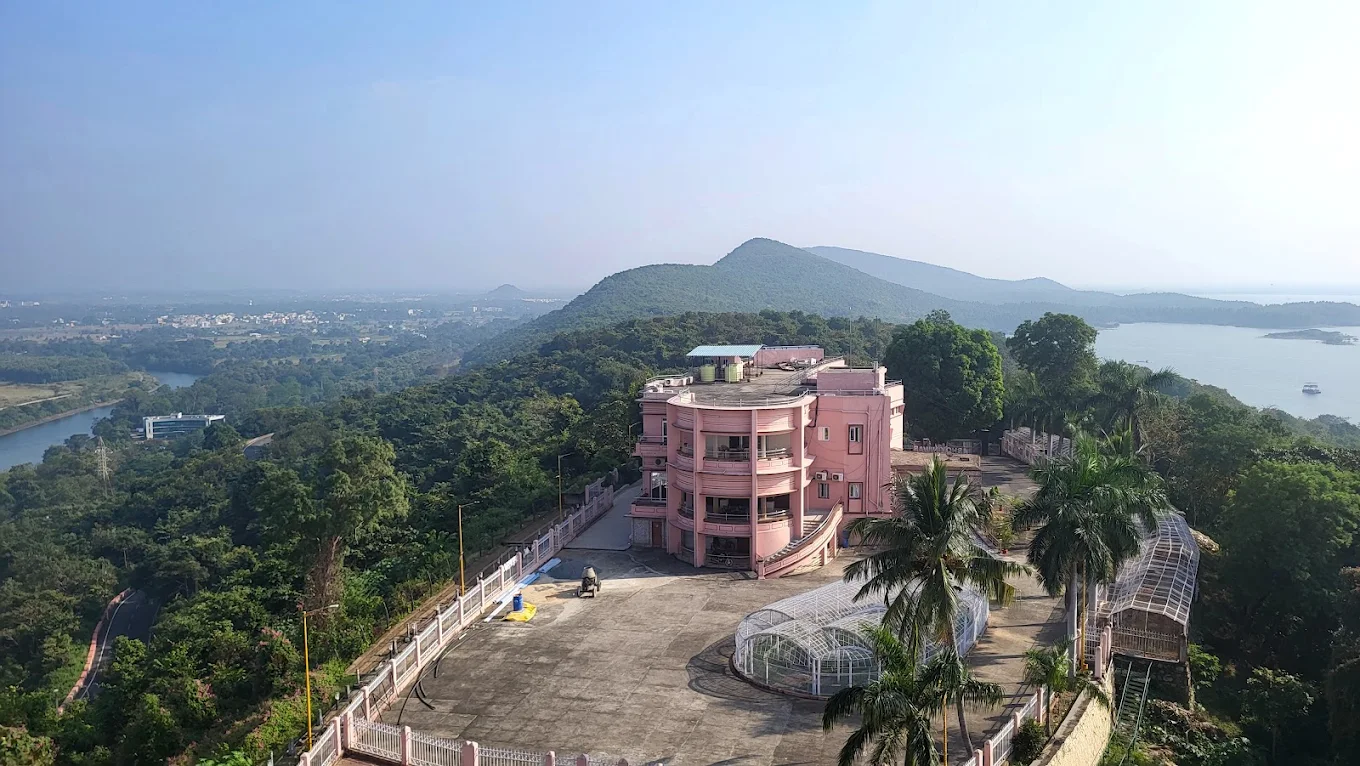
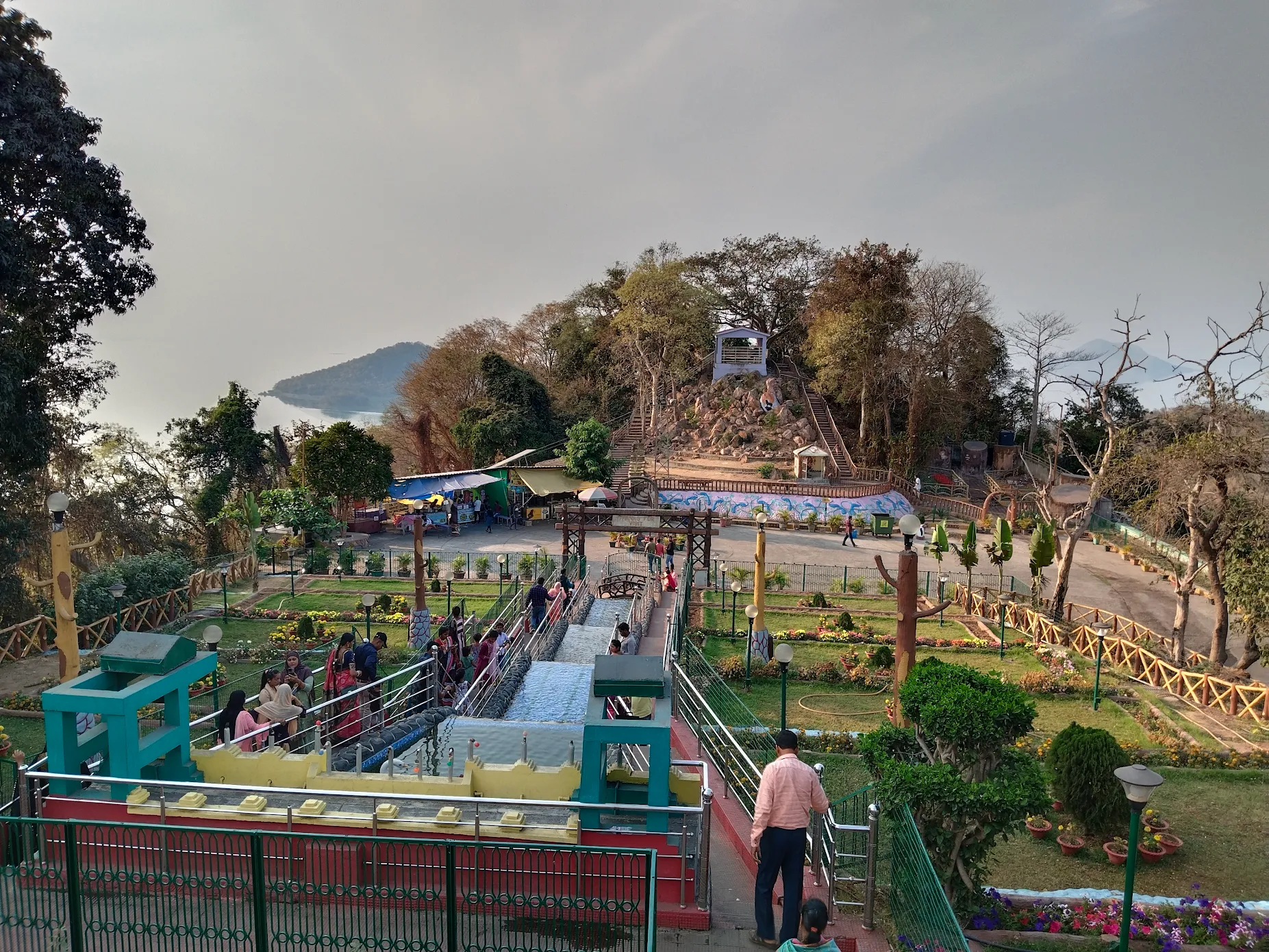
The iconic Gandhi Minar and Nehru Minar are observation towers that provide unparalleled aerial and panoramic views of the Hirakud Dam and its vast lake. For an enhanced viewing experience, the Hirakud Ropeway connects Jawaharlal Nehru Garden and Gandhi Minar. This ropeway offers a two-way journey for Rs. 60 and operates daily from 10 AM to 6 PM, except on Mondays.
Nearby Tourist Attractions
The broader Hirakud region offers a wealth of attractions that complement a visit to the dam:
Nearby Tourist Attractions Around Hirakud Dam, Sambalpur
| Attraction | Distance from Hirakud Dam | Highlights |
|---|---|---|
| Gandhi Minar | Within dam premises | Panoramic views of the dam and reservoir; rotating top tower. |
| Nehru Minar | Within dam premises | Observation point with historical significance. |
| Debrigarh Wildlife Sanctuary | ~15 km | Home to tigers, leopards, elephants, and diverse birdlife; safari available. |
| Samaleswari Temple | ~12 km | Ancient temple dedicated to Maa Samaleswari, the presiding deity of Sambalpur. |
| Huma Leaning Temple | ~30 km | India’s only leaning temple, dedicated to Lord Shiva on the Mahanadi River. |
| Cattle Island | ~10 km (via boat) | Mysterious island with feral cattle, surrounded by dam waters. |
| Burla Town | ~5 km | Educational hub, home to VIMSAR and peaceful surroundings near the dam. |
| Ghanteswari Temple | ~25 km | A unique temple where thousands of bells are offered by devotees. |
| Budharaja Hill & Temple | ~15 km | Offers scenic views of Sambalpur city and a temple atop the hill. |
| Eco Retreat Hirakud | At Jamadarpalli Air Strip | Glamping site near the dam with water sports, luxury tents, and cultural shows. |
These diversified experiences beyond the dam itself are crucial for reframing the Hirakud visit from solely “seeing the dam” to “exploring the dynamic Hirakud region,” ensuring the travel guide remains highly valuable and actionable even with current limitations.
Local Festivals & Events
Planning a visit to coincide with local festivals can significantly enrich the cultural experience. These events offer an authentic glimpse into local traditions and celebrations, adding a powerful cultural dimension to the travel guide. Key annual celebrations include:
Major Festivals Celebrated Near Hirakud Dam & Sambalpur Region
| Festival | Month | Description |
|---|---|---|
| Nuakhai | August / September | The most significant festival of Western Odisha, celebrating the first harvest and offering of new rice to the deities. |
| Sital Sasthi | May / June | Marks the divine marriage of Lord Shiva and Goddess Parvati, celebrated with grand processions and cultural performances. |
| Dussehra | September / October | Celebrates the victory of Lord Rama over Ravana; marked with Ravana effigies and festive gatherings. |
| Makar Mela | January | Harvest festival with prayers to Lord Shiva, celebrated with rural fairs and rituals. |
| Holi | March | Festival of colors signifying joy, unity, and the arrival of spring. |
| Ratha Yatra | June / July | Grand chariot procession of Lord Jagannath, Balabhadra, and Subhadra in Puri and many towns of Odisha. |
| Diwali | October / November | Festival of lights celebrating good over evil and prosperity in homes. |
Travelers are encouraged to consider the timing of their visit to coincide with these events, potentially leading to longer stays and a more memorable, immersive trip.
8. Hirakud Dam Tour Packages
Various tour packages are available for Hirakud Dam and its surrounding attractions, catering to different interests and durations. These packages often simplify the travel experience by bundling logistics and activities, which is particularly beneficial given the current access limitations to the dam premises. Organized tour packages handle the logistics, provide guided access (where permitted), and bundle various activities, thereby simplifying the planning process for travelers.
Overview of Available Packages
Options typically range from half-day trips to full-day excursions :
- Half-Day Tour: A common itinerary includes a visit to the dam (or designated viewing points given current restrictions), a leisurely stroll along the embankment, and a boat ride on the reservoir.
- Full-Day Tour: These comprehensive packages expand on the half-day itinerary, often incorporating visits to additional nearby attractions such as the Gandhi Minar observation tower and the Hirakud Wildlife Sanctuary.
- Eco Retreat Packages: For a more immersive and luxurious experience, specific packages like the “Eco Retreat Hirakud Tours Package” are available. A typical 2 Nights & 3 Days package starts from approximately ₹16,599 per person. These packages are all-inclusive, encompassing accommodation in Deluxe Swiss Cottages, all meals, comfortable AC vehicle transfers for sightseeing and intercity travel, at least one water sport ride, and evening Hi-Tea. This comprehensive, all-inclusive offering contrasts with more basic sightseeing tours, appealing to a distinct segment of the travel market seeking a more luxurious and hassle-free experience.
- Tour operators such as “Indus Journey Tours & Travels” in Bhubaneswar offer Hirakud Dam Tours. The Odisha Tourism Development Corporation (OTDC) also provides various package tours across the state, which may include Hirakud.
What to Expect in a Typical Package
- Guided Tours: Most packages include professional guided tours, offering valuable historical insights, cultural context, and local secrets.
- Transportation: Seamless transfers to and from the dam, as well as between various nearby attractions, are typically part of the package.
- Meals: Especially in multi-day and Eco Retreat packages, meals are often included, ranging from diverse global cuisines to local delicacies and evening barbecues.
- Activities: Boating on the reservoir is a common inclusion in many tours. Eco Retreat packages specifically highlight thrilling water sports and other recreational activities.
Tour packages are positioned as the most convenient and potentially most rewarding way to experience the Hirakud region in 2025. This is particularly true for travelers who might be deterred by the dam access limitations or prefer a hassle-free, organized travel experience.
9. Emergency & Important Contacts
Having access to essential emergency and important contacts is crucial for any traveler. This section provides a comprehensive list of helplines and local contacts for assistance in Sambalpur and the broader Odisha region.
These contacts are essential for ensuring traveler safety and providing immediate assistance in unforeseen circumstances. The re-designation of the Sambalpur District Police Control Room as the civil defence control room for public information regarding dam access underscores its critical role in visitor planning for 2025.
10.Conclusions & Recommendations
The Hirakud Dam and its surrounding Sambalpur region present a fascinating blend of engineering marvel, natural beauty, and rich cultural heritage. However, planning a visit for 2025 requires careful consideration of recent developments and existing conditions.
Key Conclusions:
- Current Access Limitations: As of May 2025, direct entry to the Hirakud Dam premises is restricted for tourists due to heightened national security concerns. This temporary measure, subject to periodic review, significantly impacts the traditional visitor experience of the dam itself. Furthermore, reports indicate that foreigners may face pre-existing or exacerbated entry denials.
- Regional Appeal Beyond the Dam: Despite these restrictions, the broader Hirakud region remains a compelling destination. It offers diverse attractions including the vast Hirakud Reservoir for boating, the Debrigarh Wildlife Sanctuary, significant religious sites like Samaleswari Temple and the Leaning Temple of Huma, and vibrant local festivals.
- Optimal Visiting Period: The winter months (October to March, especially November to February) offer the most pleasant weather, ideal for outdoor activities, bird-watching, and coinciding with various cultural events. Summer offers a unique opportunity to see submerged temples, but at the cost of extreme heat. Monsoon season poses significant safety risks due to potential floodwater release and restricted access.
- Comprehensive Eco Retreat Experience: The seasonal Hirakud Eco Retreat (December 2024 to March 2025) emerges as a central hub for a comprehensive visitor experience. It provides luxury accommodation, diverse culinary options, and a wide array of water sports and recreational activities, effectively serving as a primary destination for those seeking an immersive experience in the Hirakud area, especially when direct dam access is limited.
- Ongoing Dam Rehabilitation: The significant DRIP Phase III project (2025-2031) underscores the long-term commitment to the dam’s integrity. While beneficial, this ongoing construction may lead to temporary disruptions or altered views in the vicinity.
Actionable Recommendations for Travelers in 2025:
- Verify Real-time Access: Prioritize checking the most current status of dam access before departure. The Sambalpur District Police Control Room (8018250001), now designated as the town civil defence control room, is the primary contact for real-time security advisories and visitor guidelines. This is crucial to manage expectations and avoid disappointment.
- Focus on the Broader Region: Shift the itinerary focus from direct dam premises access to exploring the rich array of attractions and activities available in the wider Hirakud region. This includes the reservoir, wildlife sanctuaries, and cultural sites.
- Leverage the Eco Retreat: For those seeking a comprehensive and activity-rich experience, particularly during the winter season, consider booking a stay at the Hirakud Eco Retreat. It serves as an excellent base for water sports, guided tours, and other amenities, providing a fulfilling experience even without direct dam access.
- Plan Seasonally: Align your visit with the recommended winter months (November to February) to maximize comfort and enjoy the full spectrum of activities, including migratory bird sightings and local festivals. If interested in the unique sight of submerged temples, be prepared for the intense summer heat.
- Utilize Local Transport Information: Take advantage of the detailed local transportation options provided, especially the Mo Bus Route 203 for budget-friendly travel, or taxis/trains for quicker commutes from Sambalpur.
- Prioritize Safety: Always adhere to local safety guidelines, particularly concerning water bodies and restricted zones. Be extra cautious during the monsoon season due to flood control measures.
- Consider Tour Packages: For a hassle-free experience, especially given the dynamic access situation, explore organized tour packages that bundle transportation, guided tours, and activities, simplifying logistics and ensuring a well-rounded trip.

